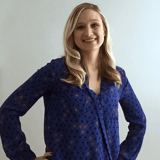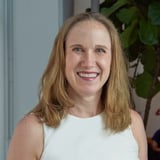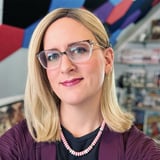Summary
In large organizations, design is often sparse or intentionally decentralized in a way that places it subservient to Product and Engineering—and ultimately limits its potential for impact. Knowing that, is it possible to create a basis for change? How might we address the decentralization of design with the goal of increasing design maturity and producing better outcomes? How can we apply the design process organization-wide and across silos? In this session, Jess Greco will discuss how the team at Mastercard is approaching change management through the lens of: Individuals and their needs The organization and its needs Efforts to align those two sets of needs Jess will also share results of Mastercard’s experimental Customer Experience Design Guild; investments in Learning & Development; and Guild-wide efforts to reframe how the organization views the practices and processes that support human-centered design.
Key Insights
-
•
MasterCard's design transformation is driven by the urgent need for new products to succeed independently due to decreased reliance on legacy revenue.
-
•
The Customer Experience and Design Guild connects isolated designers across global teams, providing community, advocacy, and tools for better design practices.
-
•
The skills inventory linked to the career framework allows evidence-based planning and leadership buy-in for targeted learning and development.
-
•
Three distinct organizational models coexist at MasterCard with varying levels of design maturity: embedded teams, decentralized networks, and tiny teams often lacking differentiation skills.
-
•
Relying on single designers performing multiple jobs ('unicorns') limits design impact and hinders differentiated product outcomes.
-
•
Shifting organizational incentives to require customer-centric outcomes from product teams increases accountability and business alignment.
-
•
The Guild's influence expands beyond community-building to shaping staffing, hiring, product development frameworks, and cross-functional partnerships.
-
•
Master classes launched during Jess’s parental leave train product and business teams on design fundamentals to foster a shared understanding of what good design entails.
-
•
The company-wide design conference engages hundreds of participants, aligning content directly to skills inventory findings and practical ways of working.
-
•
Integrating skills assessment with existing frameworks and cross-group stakeholder engagement is critical to gaining broad support and reducing resistance.
Notable Quotes
"The business doesn’t just want to do design better; they want the outcomes that design can make possible."
"We need to get better at betting new products will stand on their own sooner rather than later."
"Designing for differentiation can create constructive friction with partners who have different ideas about what design and research are for."
"Without attribution you can’t get funding, and if it’s not funded, it’s not a priority."
"Strong product outcomes are about quality of customer understanding and collaboration, not just the artifacts we make."
"Some teams rely heavily on one or two designers who can do a bit of everything, but their depth is limited compared to core disciplines."
"We can’t force people to partner with design, but if partnering makes it easier to meet framework requirements, that’s a win for everyone."
"Changing outcomes means changing incentives on all fronts to shift the culture effectively."
"Connecting the skills inventory to the career framework was crucial to getting buy-in across functions."
"The Guild is much more than a community; it’s actively driving standards and creating conditions for success across the company."
Or choose a question:
















More Videos

"Connecting with colleagues and making those connections intentional is key to feeling psychologically safe."
Alla WeinbergPeople Are Sick of Change: Psychological Safety is the Cure
July 20, 2023

"A shared understanding of how you got here creates a sense of purpose, not just urgency."
Alastair SimpsonDebunking the Myths of Cross-Disciplinary Collaboration
October 24, 2019

"It took a lot of relationship building and conversations to break down the perception that designers' time was owned by particular teams."
Alicia MootyDesign Staffing Models
September 30, 2021

"Lauren Cantor is a heavy hitter gathering all the really good resources and putting them together."
Uday Gajendar Louis RosenfeldDay 2 Welcome
June 5, 2024

"Repository to me has a connotation of a place where stuff goes to sit and collect dust."
Matt DuignanAtomizing Research: Trend or Trap
March 30, 2020

"Testing one user is 100 percent better than testing none, but it’s not a strategy forever."
Leisa ReicheltThe Five Dysfunctions of Democratized Research at Scale
March 30, 2020

"Iteration means don’t prepare your talk the night before. Start early, practice, and evolve your message over time."
Louis Rosenfeld Jemma Ahmed Christian Crumlish Uday Gajendar Chris GeisonCoffee with Lou #3: What Makes for a Successful UX Conference Presentation?
May 2, 2024

"Disability is the only identity that all of us will probably adopt at some point during our lives."
Sam ProulxAccessibility: An Opportunity to Innovate
June 8, 2022

"The word obsessed is provocative and meant to push us to continually ask what can we do more."
Sara Asche Anderson Jamie KaspszakNot Your Ordinary Re-Brand: Design's Path to Driving Customer Obsession at Best Buy
January 8, 2024
















